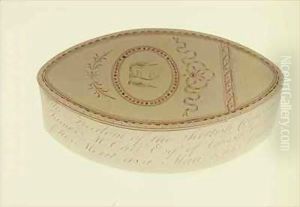Hester Bateman Paintings
Hester Bateman was a renowned English silversmith who worked during the 18th century, widely recognized for her contribution to Georgian silver. Born in 1708, Hester worked in the trade of silversmithing after inheriting her husband's workshop following his death in 1760. Despite being a woman in a male-dominated field during that time, she managed to not only sustain but also grow the business significantly.
After taking over her husband's business, Hester Bateman registered her mark at the Goldsmiths' Hall in London. Her work is characterized by its elegant and refined neoclassical style, often incorporating bright-cut engraving, piercing, and beading, which became hallmarks of her pieces. She was known for producing a wide variety of items such as tea caddies, salt cellars, sugar baskets, and milk jugs, as well as personal items like snuff boxes and buckles. Her designs often featured motifs popular in the neoclassical period, such as urns, swags, and festoons.
Hester Bateman's business became a family affair, with her sons and other relatives joining and continuing the trade under the Bateman name after her retirement. She passed away in 1794, leaving behind a legacy of craftsmanship and business acumen that not only paved the way for the success of her immediate family but also set a precedent for female entrepreneurs in the arts. Today, Hester Bateman's silver works are highly collectible and are considered exemplary pieces of Georgian silver, sought after by collectors and museums around the world.
